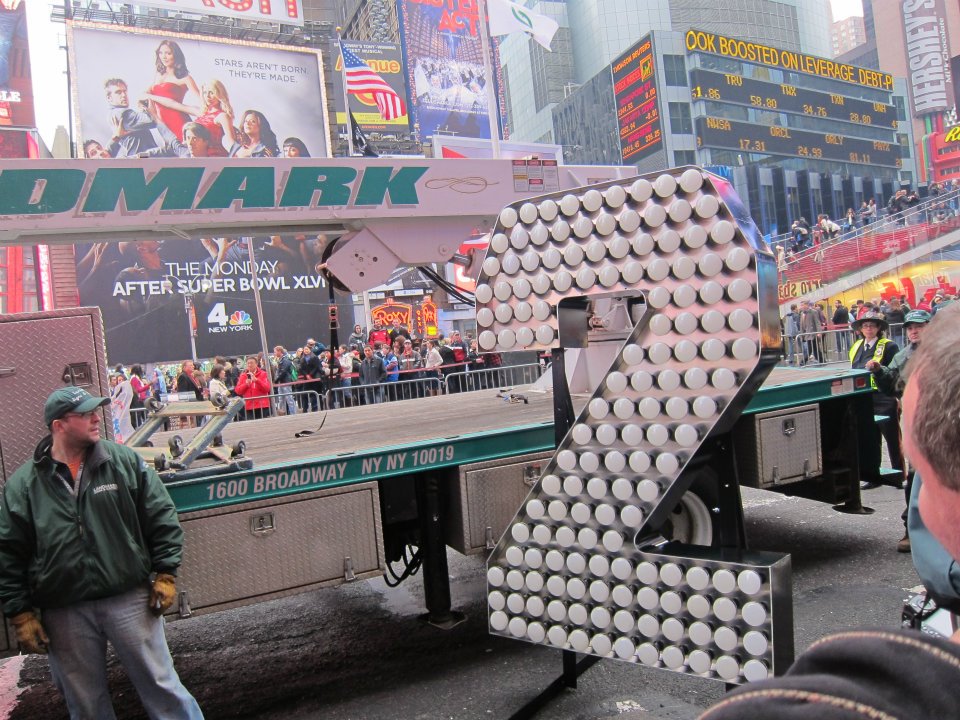Time Square's New Year's LED ball


New Years Eve 2012 will mark the symbolic end of the Edison era. Millions of Americans will herald in 2012, and the dawn of higher efficiency lighting standards, with their eyes directed onto LED lighting when the ball drops in New York's Times Square.
Incandescent lightbulbs gleamed down on exuberant New Yorkers beginning in 1907. It took more than a century for that to change. An array of 526 LED lights will now illuminate the numerals of a giant '2012' sign to officially begin the new year.
Philips will be providing the LEDs, in partnership with Countdown Entertainment, which has produced the past 17 events. The sign will customarily remain lit all year long. Meanwhile, 2012 will begin to bring an end to another time honored custom: changing blown out light bulbs.
The Energy Independence and Security Act of 2007 requires that lighting manufacturers phase out 100-watt incandescent bulbs starting in January 2012; other wattages must be replaced by more efficient lighting by 2014.
There are a number of options for consumers such as CFLs, LED lights, and higher efficiency incandescent bulbs. Contrary to the widely held belief, incandescent light bulbs are not being banned, and CFLs will not become mandatory.
Former president Bush and Congress created the law to reduce energy consumption. Philips forecasts that the U.S. could reduce light bulb electricity use by 60 percent by 2020 (naturally it wants to sell a lot of LEDs).
Australia, China, and the European Union are among other nations that have pledged to phase out incandescent bulbs. Whether the U.S. will meet its goal remains uncertain.
Congressional Republicans led by the Tea Party faction have given the 100-watt bulb a stay of execution. A provision in legislation to fund the U.S. government in the coming year bars the Department of Energy from carry out its task.
Lighting manufacturers are unhappy with the sudden shift in policy after having invested in newer technologies. The industry fears being undercut by unregulated bad actors, which could undermine its major capital investments.
Related on SmartPlanet
- South Africa’s LED push
- From the horse’s mouth: LED bulbs are too pricey
- How to eliminate Japan’s nuclear reactors
- More LED truths and half-truths
- When good lights go bad: LED breakdown
- LED lightbulbs make people feel safer
- The hot and cold of LED lighting
- Meet Switzerland’s largest LED project
This post was originally published on Smartplanet.com